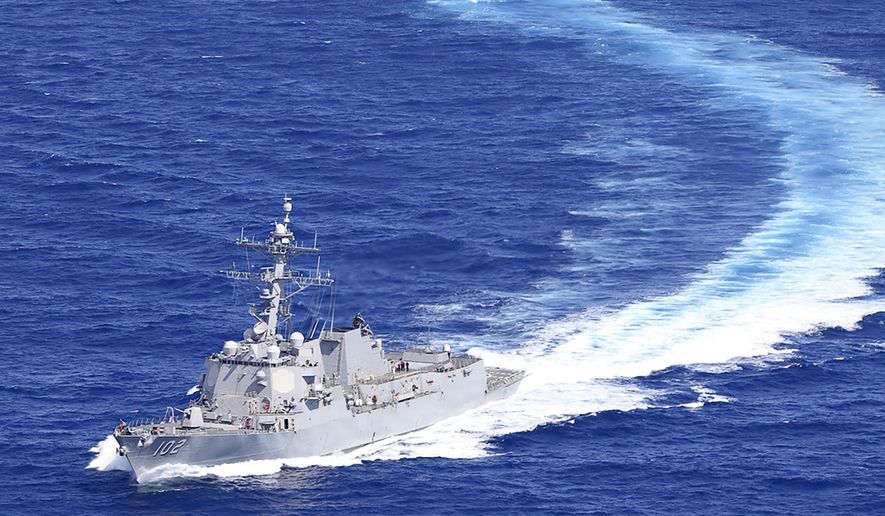A U.S. Navy guided-missile destroyer sailed through the Taiwan Strait this week triggering yet another blast of criticism from China’s People’s Liberation Army.
The Arleigh Burke-class destroyer USS Sampson made what the Navy called a “routine” passage through the 110-mile strait between mainland China and the island of Taiwan on Monday. A brief Navy statement said the operation was conducted in international waters and under international law, but China considers Taiwan part of its sovereign territory.
“The ship’s transit through the Taiwan Strait demonstrates the United States’ commitment to a free and open Indo-Pacific,” said a Seventh Fleet spokesman. “The United States military flies, sails, and operates anywhere international law allows.”
The voyage drew a rebuke from a Chinese military spokesman who called it a provocation.
“The U.S. has been frequently carrying out provocative acts to send wrong signals to ‘Taiwan Independence’ forces, deliberately undermining peace and stability across the Taiwan Strait,” PLA Sr. Col. Shi Yi, of the eastern theater command said in a written statement Wednesday. “China is firmly opposed to this.”
According to the PLA, military forces were dispatched to “track and monitor” the destroyer and “remained alert” during the operation.
A Navy spokesman did not respond to a request for comment on the PLA spokesman’s remarks.
Tensions remain high between the United States and China over the self-ruled island that has received an estimated $16 billion in defensive arms over the past several years, including purchases of new American F-16 jet fighters. Taiwan is stepping up its defenses in the aftermath of the Russian military invasion of Ukraine, over concerns China’s military may take similar action against Taiwan.
Beginning in 2017, the Navy began stepping up warship passages in the Taiwan Strait.
China opposes the operations because it claims the international waterway is its sovereign maritime territory.
China and the United States also have clashed over U.S. and allied warship operations in the South China Sea, where China is claiming nearly all of that strategic waterway as sovereign maritime territory.
• Bill Gertz can be reached at bgertz@washingtontimes.com.




Please read our comment policy before commenting.